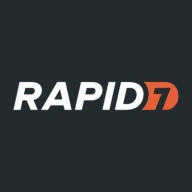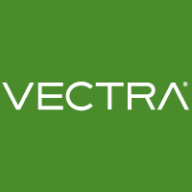

Vectra AI and Rapid7 InsightIDR are key security platforms competing in advanced threat detection and security intelligence. Rapid7 InsightIDR has an edge with its extensive features.
Features: Vectra AI is known for advanced threat detection, enhancing network visibility and real-time analysis. Rapid7 InsightIDR features comprehensive threat intelligence and insightful reporting, along with enhanced endpoint visibility, offering an appealing feature set.
Room for Improvement: Vectra AI could improve integration flexibility, report customization, and user interface intuitiveness. Rapid7 InsightIDR needs better log management, alert accuracy, and integration capabilities, which could enhance user experience.
Ease of Deployment and Customer Service: Vectra AI is praised for straightforward deployment and consistent support, while Rapid7 InsightIDR is easy to use but could improve deployment speed and support responsiveness to match Vectra AI's service levels.
Pricing and ROI: Vectra AI offers competitive pricing with significant ROI due to detection accuracy and efficiency. Rapid7 InsightIDR is considered costly but provides substantial ROI through its extensive features, valued by users for long-term investment.
| Product | Market Share (%) |
|---|---|
| Vectra AI | 3.4% |
| Rapid7 InsightIDR | 2.9% |
| Other | 93.7% |


| Company Size | Count |
|---|---|
| Small Business | 20 |
| Midsize Enterprise | 5 |
| Large Enterprise | 6 |
| Company Size | Count |
|---|---|
| Small Business | 9 |
| Midsize Enterprise | 10 |
| Large Enterprise | 27 |
Parsing hundreds of trivial alerts. Managing a mountain of data. Manually forwarding info from your endpoints. Forget that. InsightIDR instantly arms you with the insight you need to make better decisions across the incident detection and response lifecycle, faster.
Vectra AI enhances security operations by pinpointing attack locations, correlating alerts, and providing in-depth visibility across attack lifecycles, ultimately prioritizing threats and improving incident responses.
Vectra AI integrates AI and machine learning to detect anomalies early and supports proactive threat response. Its features like risk scoring, alert correlation, and streamlined SOC efficiency are supplemented by integration with tools like Office 365. Users highlight integration, reporting, and customization challenges, alongside limitations in syslog data and false positive management. They seek enhancements in visualization, UI, TCP replay, endpoint visibility, and tool orchestration, with requests for improved documentation, licensing, and cloud processing innovation.
What are the key features of Vectra AI?In industries like finance, healthcare, and critical infrastructure, Vectra AI is crucial for threat detection and network monitoring. Entities use it for identifying anomalous behaviors and enhancing cybersecurity by responding to network activities and analyzing traffic for potential breaches. It operates on-premises and in hybrid cloud settings, enabling threat detection without endpoint agents and supporting compliance and policy enforcement.
We monitor all Extended Detection and Response (XDR) reviews to prevent fraudulent reviews and keep review quality high. We do not post reviews by company employees or direct competitors. We validate each review for authenticity via cross-reference with LinkedIn, and personal follow-up with the reviewer when necessary.